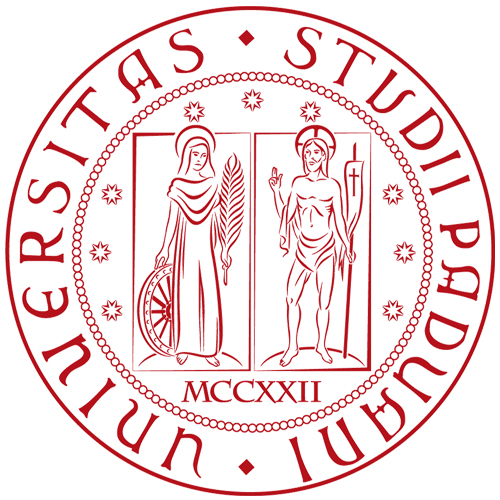PHRC008 : Decree of the city of Skepsis for Antigonos Monophthalmos - Troas (311/0 BC) Decree
Permanent ID http://s.phrc.it/phrc008
Text constituted from: OGIS 6, with the exception of line 37, where we follow Michel 1919.
Other editions: Munro 1899, p. 335-336.
See also: Habicht 2017, no. 19; Kotsidu 2000, p. 310-312, no. 214 [E]; Bagnall - Derow 2004, p. 9-10, no. 6 (English Trans.)
Images:
Further bibliography: Welles, RC 1; Cook 1973, p. 345-347; Billows 1990, p. 131-134; Wallace 2011, p. 126-129.
Online record: PHI
0
[20.................... ἀφέσταλκεν]
Ἄκιον :
ὃς [ὑπάρχει
τῆι πόλει
ἡμῶν εἰς τὸ]
[π]ᾶν εὔνους καὶ
[τὴν πρ]ο[θυμίαν ἀεὶ διαφυ]
-
λάσσων διατελεῖ, καὶ
ἀ[ξιοῖ]
αὐτῶι ἐμφα
-
[ν]ί<ζ>ειν
ὧν ἂν δέηται
ἡ πόλις :
ἀφέσταλκ[ε]
5
[δ]ὲ καὶ
τὰς ὁμολογίας τὰς πρὸς
Κάσσαν
-
δρον καὶ Πτολεμαῖον
καὶ Λυσίμαχον αὐ
-
τῶι γεγενημένας καὶ τῶν ὅρκων
ἀντίγρα
-
φα : καὶ περὶ τῆς τῶν
Ἑλλήνων εἰρήνης
καὶ αὐτονομίας τὰ πεπραγμένα :
δεδό
-
10
<χ>θαι
τῶι δήμωι·
ἐπειδὴ Ἀντίγονος τῆι τε
<π>όλει καὶ
τοῖς ἄλλοις Ἕλλησιν
μεγάλων
ἀγαθῶν αἴτιος
γεγένηται : ἐπαινέσαι
μὲν Ἀντίγονον
καὶ συνησθῆναι αὐτῶι
ἐπὶ τοῖς πεπραγμένοις :
συνησθῆναι δὲ
15
τὴν πόλιν
καὶ τοῖς Ἕλλησιν
ὅτι ἐλεύθε
-
[ρ]οι καὶ αὐτόνομοι
ὄντες ἐν εἰρήνηι
[εἰς] τὸ λοιπὸν
διάξουσιν :
ὅπως δ’ἂν
Ἀντί
-
γονος τιμηθῆι
καταξίως
τῶμ πεπραγμέ
-
νων : καὶ ὁ δῆμος
φαίνηται
χάριν ἀποδι
-
20
δοὺς ὧν προείληφεν
ἀγαθῶν :
ἀφορίσαι
αὐτῶι
τέμενος
καὶ βωμὸν
ποῆσαι
καὶ ἄγαλμα
στῆσαι ὡς
κάλλιστον :
τὴν δὲ θυσίαν κα[ὶ]
τὸν ἀγῶνα
καὶ τὴν στεφανηφορίαν καὶ
τὴν λοιπὴν παν[ήγ]υριν
γίνεσθαι αὐτῶι
25
καθ’ ἕκαστον
ἔτ[ος],
[κα]θάπερ καὶ
πρότερο[ν]
συνετελεῖτο·
[στεφα]νῶσαι
δὲ αὐτὸν χρυ
-
σῶι στεφάνωι
[ἀπὸ στατήρ]ων
χρυσῶν
ἑκα
-
τόν : στεφανῶσ[αι]
δὲ καὶ [Δημ]ήτριον
καὶ Φί
-
λιππον, ἑκάτερον
χρυσοῖ[ς πεν]τήκοντα·
30
ἀπαγγεῖλαι
δὲ τοὺς στεφάν[ους τῶ]ι
ἀγῶ[νι]
ἐν τῆι πανηγύρει :
θῦσαι δὲ καὶ
[εὐ]αγγέ
-
λια τὴν πόλιν ἐπὶ
τοῖς ὑπ’
Ἀντιγόν[ου]
ἀφεσταλμένοι[ς] :
στεφανηφορῆσαι δ[ὲ]
καὶ τοὺς πολίτα[ς] πάντας :
τὸ δὲ ἀνάλω
-
35
μα δοῦναι τὸ εἰ[ς τ]αῦτα
τὸν ταμίαν·
πέμψαι δὲ καὶ
Ἀκ[ί]ωι
ξένια : τὰς δὲ ὁμολο
-
γίας καὶ τὰς ἐπ[ι]στολὰς
τὰς παρ’ Ἀντιγό
-
νου : καὶ τοὺς ὅ[ρ]κους
οὓς ἀπέστειλεν
ἀναγράψαι εἰς
[σ]τήλην
καθάπερ
Ἀντίγο
-
40
νος ἐφέστειλε[ν],
[κ]αὶ
θεῖναι εἰς
τὸ ἱερὸν
τῆς Ἀθηνᾶς :
ἐπ[ιμελη]θῆναι
δὲ τὸν γραμ
-
ματέα :
δοῦναι [δὲ] καὶ
εἰς ταῦτα τὸ ἀνάλω
-
μα τὸν ταμίαν :
[ὀμόσα]ι
δὲ τοὺς πολίτας
πάντας τὸν ὅρ[κον τὸν ἀφεσ]ταλμένον
κα
-
45
θάπερ
Ἀντί[γονος ἐφέστειλεν] : τοὺς δὲ
ἡιρημέ[νους 20....................]
νους
[26..........................]
υ[29.............................]
[..?..]
The text of this marble stele sheds light on the honours decreed for Antigonos Monophthalmos by the city of Skepsis in 311/0 BC. Its date is made sure by the reference to the peace between Antigonos, Cassander, Ptolemy, and Lysimachos, which brought to an end the 4th Diadoch War, and by the close link between this text and the other stele found on place, which contains the letter of Antigonos to the city of Skepsis ( OGIS 5) concerning the peace treaty. The decree is the response of the civic institutions to this announcement.
The citizens of Skepsis decided to honour Antigonos by delimiting for him a sacred enclosure and by erecting, within it, an altar and a cult statue of the Diadoch. To date, this is the earliest attestation of rituals decreed by a Greek city for a successor of Alexander, as it predates by four years the cultic honours established by the Athenians in 307/6 BC, after the expulsion of Demetrios of Phaleron. However, it is clear from the text that this decree was meant to augment some cultic honours, which Skepsis had already dedicated to Antigonos, probably after his declaration in favour of the freedom of Greek cities in 315 BC. Lines 22-26 report the existence of an annual festival (Antigoneia ?), which already included not only a sacrifice, but also a contest and a parade of the citizens with a crown (stephanephoria); the latter was probably part of the procession implied by the statement “the rest of the festival”. The main features of the festival did not change (lines 25-26), but the new decree provided them with a new focal point, whereas previous celebrations might have taken place in a public space, perhaps the agora or another sanctuary.
The decree foresees a second occasion for a stephanephoria, besides the annual festival. This corresponds to the sacrifices by which the city would welcome future messages of Antigonos as good announcements (εὐαγγέλια). The decree also mentions non-religious honours for both Antigonos, his sons (honorific crowns, to be announced during the contest that accompanies the annual festival), and, if the reading proposed by Michel 1919 is correct, his messenger Akios, who would receive special hospitality gifts.
For centuries, the site of Skepsis was so dramatically pillaged to reuse its precious stones that by the 19th century, almost nothing had survived of the ancient monuments (Cook 1973, p. 345-347). With these premises, even a speculative identification of the processional route and of the location of the sacred enclosure of Antigonos is impossible. However, the dossier concerning the peace and the honours for Antigonos delivers at least one interesting piece of information concerning the ancient topography of the city: the findspot of the two stelae on the top of Kurşunlu Tepe, reasonably the acropolis of Skepsis, enables us to conclude that the sanctuary of Athena was located there.
One can only speculate about the destiny of these honours when, only a few years after the peace of 311/0 BC, Antigonos took the decision to incorporate Skepsis into his new foundation of Antigoneia (later renamed Alexandria Troas when the city passed under the control of Lysimachos; Cook 1973, p. 198-204). By depriving Skepsis of its autonomy, the synoecism certainly revolutionized the religious calendar of the community, perhaps marking the end of the cultic honours for Antigonos even before his death at Ipsos in 301 BC.



